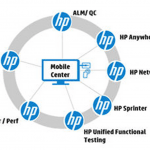Traceability – It doesn’t have to be complicated
By: Nicole Taylor
After months of hard work, it’s finished. The application has been designed, reviewed, tested, tested again, and finally goes live. Then it hits: the wave of defects, errors and other unknowns which always seem to occur. Your developers are correcting the errors and addressing the concerns, so you breathe a sigh of relief… but only for a moment. Now management wants to see it. They want to know why it failed when their design did not. There is only one thing that can save you now: traceability.
Now maybe it’s not so dramatic. Surely there are many things that can go wrong during testing, just as there are numerous software solutions to address those issues. HP’s Application Lifecycle Management (ALM) has been proven to cut testing costs by up to 73%, reduce production issues up to 80% and accelerate testing cycles up to 40%. And the area that can assist the most? Look no further than HP ALM’s testing traceability.
It’s All About Relationships
Traceability in testing is all about relationships: relationships between requirements, test cases, and defects. As you are probably aware, maintaining the proper relationship between those entities is vital for successful testing. If a requirement is correctly tied to one or more test cases, users can identify how it’s proceeding, if the requirement is even valid, and help research why that requirement continues to fail.
Now we all track requirements in a variety of ways. We store them on spreadsheets, SharePoint, the odd napkin or two, and even through email. All of these could be arguably useful methods, but having a unified repository to trace your requirements to defects, test cases and other initiatives will be far more valuable. Whether you’re the project manager, developer, or tester, you now have an understanding of which requirement defects and test cases are failing and how they relate to each other.
Your Ace in the Hole
Your project has now completed the requirements phase. Everything has been added, reviewed, and approved. As you go through the test cases, you notice several requirements failing. As they continue to fail, the value of your testing time and overall project decreases. However, you now have an ace in the hole: HP ALM’s traceability.
By creating a simple report, using the view coverage feature, or simply selecting the requirement, users can see how these various entities are related. This causes a relationship (or traceability) between those items, creating an easy way to evaluate or view the progress of your project.
HP ALM gives users the tools they need to easily track all of your valuable entities. No more wondering if this relationship is complicated, or a work in progress, or simply not worth mentioning. Now your relationship can be just that; a simple traceable relationship.
About ResultsPositive
ResultsPositive, award winning HP Partner of the Year for Sales Growth (2014), Customer Support (2013), PPM (2010, 2011, 2012), and Executive Scorecard (2012), was founded in 2004. ResultsPositive is a leader in IT Software consulting delivering Project & Portfolio Management, Application Transformation, Business Intelligence, Mobility, Application Lifecycle Management, IT Service Management, Business Service Management, Healthcare Transformation, & Cloud and Automation solutions across the entire HP IT Performance Suite for medium sized and Fortune 500 companies. As both an HP Platinum Partner and HP ASMP-S Support Provider, ResultsPositive has the experience, support, and training necessary to turn your complex IT processes into tangible business solutions.
For more information about our testing services, visit:
https://resultspositive.com/application-lifecycle/testing/
Subscribe for the latest RP Blog Updates:










